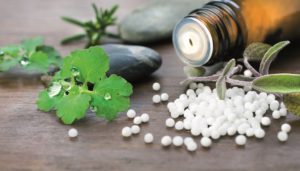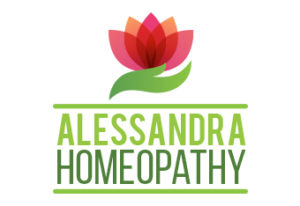 About Homeopathy
About Homeopathy
 Classical Homeopathy is an individualized medicine using your particular symptoms to find the correct remedy that will restore your health.
Classical Homeopathy is an individualized medicine using your particular symptoms to find the correct remedy that will restore your health.
The World Health Organization recognizes Homeopathy as the second most practiced alternative form of medicine worldwide. Homeopathy is a complete system of medicine based on scientific principles that have been clinically tested for more than 200 years. Homeopathy takes into account not only the medical diagnosis, but also your complete symptoms including mental, emotional, and physical complaints. The appropriate remedy is then chosen to help boost your vital force. In turn, it strengthens the immune system enabling your body to overcome what is ailing it. Homeopathy is highly effective, non toxic and has no side effects.
What is Homeopathy?
Homeopathy is a complete system of medicine based on scientific principles that have been clinically tested for more than 200 years. This science brings a truly holistic approach to health that views your specific medical issues within the broad context of your complete physical health history including mental and emotional symptoms.
Homeopathic remedies are plant-based, non-toxic, and without side effects. They have proven highly effective and are safe for babies, pregnant women, the elderly and pets.
How Popular is Homeopathy?
Homeopathy is very popular. It has over 300 million active users in 50+ countries. Here are some more specifics:
- In Europe homeopathy is the most popular alternative form of medicine. Three Europeans out of four know about homeopathy and of these 29 % use it for their health care. 45% of Dutch doctors use homeopathy and 39% of Belgian pediatricians are in favor of Homeopathy. The British Royal Family has been under homeopathic care since 1820 and there has always been a Royal Homeopathic Doctor. The Queen carries her ‘black box’ of homeopathic remedies that includes 60 vials of homeopathic medicines with her on all her travels
- India has 150 million homeopathic users under the purview of state run hospitals. 62 percent of homeopathic users have never tried conventional medicine.
- By 2012 in the United States, $6.2 billion were spent on homeopathic medicine
- Homeopathy is included in the national health systems of a growing number of countries including United Kingdom, Brazil, Chile, India, Mexico, Pakistan, and Switzerland
How Does it Work?
Homeopathy is a medical science based on the principle of ‘like cures like’, meaning that a substance that can create a symptoms in a healthy person would be able to cure the same set of symptoms in an unhealthy person.
An example of this would be the symptoms of watery, burning eyes and sneezing that we experience while cutting an onion. A homeopathic remedy made of onion extract will cure the above symptoms in a patient who has a cold or suffers from hay fever and is experiencing watery, burning eyes and sneezing.
How was Homeopathy Discovered?
Dr. Samuel Hahnemann discovered Homeopathy 200 years ago.
Dr. Hahnemann had many skills. Besides being a medical doctor, he was a well known chemist and linguist, translating medical journals in various languages.
It was during one of these medical translation that he came across an account of a doctor stating that he had cured his patient of malaria by the bitter properties of Peruvian bark or Quinine. This was interesting to Dr. Hahnemann so he decided to experiment with this medicine himself, by taking small amounts of the medicine daily and keeping meticulous record to see what would happen. Within a short time he started to experience Malaria like symptoms. This made him realize that it was not the bitter property of the medicine that cured the patient of Malaria, but it was the fact that the medicine mimicked the same symptoms of Malaria and it was this that cured the patient. This understanding was profound and led Dr. Hahnemann to understand what has come to be known as the 1st guiding principle of his “new medicine, Homeopathy.” That a substance which can produces symptoms in a healthy person cures those some symptoms in a sick person, or “Like cures Like”.
Dr. Hahnemann and his colleagues then started to experiment with different substances and recording the symptoms they experienced. When patients were prescribed medicines that produced similar symptoms they started to experience great successes in curing and restoring health to their patients.
Detailed records of the symptoms are found in the Homeopathic Materia Medica and the principles of how and why Homeopathy work are in Dr. Hahnemann’s book, Organon of the Art of Healing.
Medical Consultation versus Homeopathic Consultation
Your initial 90 minute consultation with Alessandra involves gathering a broad spectrum of information used to arrive at the correct remedy prescription.
In contrast, conventional medical consultations are of short duration and tend to cover only the single symptom affecting the patient.
What are Homeopathic Remedies made of?
Homeopathic remedies are made up of extremely small amounts of natural substances derived from plant, mineral or animal material. They are nontoxic and when properly administered by a homeopathic practitioner can be safely used by everyone including infants, children, pregnant and nursing mothers and the elderly. Domestic pets and animal livestock can also be treated homeopathically. There are no known or suspected contraindications or drug interactions between homeopathic remedies and conventional medicines.
What types of illnesses can Homeopathy help with?
Homeopathy can help with many conditions from acute to chronic conditions to palliative care. In my experience, the clients who have received the quickest and most remarkable recovery and success are those that are experiencing symptoms but have no medical diagnosis yet. This usually indicates that an initial inflammatory stage has began in the body where function is affected but there has been no destruction of tissue yet.
How do Homeopathic Remedies Different from Conventional Remedies?
With conventional medicine the patient is given a general medication that likely does not take into account the client’s unique symptom picture.
Homeopathic, remedies are offered based on the patient’s unique, holistic health picture allowing the opportunity for a more effective result. In addition, homeopathic remedies are derived from natural substances and are non-toxic and without negative side-effects.
Sample of conditions that homeopathy can help with:
Acute – Colds, flu’s, coughs, earaches, sinusitis, vertigo, urinary infections, food poisoning.
Emotional & Mental – Anxieties, phobias, depression, nervous exhaustion, grief.
Aches and Pains – Muscles and joint pain, rheumatic and arthritic aches and pain.
Injuries & Traumas – Concussions, bruises, sprains, burns, stings or bites, cuts.
Female Problems – Puberty, PMS, menopausalPMS, fertility promotion, infertility, menopausal, fibroids, endometriosis, polycystic ovary syndrome.
Hormonal Difficulties – Thyroid Conditions, adrenals support.
Digestion – Heartburn/Indigestion, constipation/diarrhea, ulcers, food allergies and intolerances, IBS, celiac disease, ulcerative colitis, stomach flu.
Skin conditions – Warts, acne, eczema and psoriasis.
Chronic Diseases – Chronic headaches, sinusitis, hay fever (allergic rhinitis), arthritis and osteoarthritis , IBS, colitis, chronic sinusitis, hay fever (allergic rhinitis), sweaty palms and feet, offensive odors, liver and gallbladder difficulties, kidney insufficiencies, lumbago, sciatica, herpes zoster…and more.
What is Homeopathic Treatment like?
The initial visit is 90 minutes in length and allows the patient to fully describe themselves, their symptoms and share their problems and concerns. All the information collected during the consultation is kept strictly confidential and is used by the Homeopath to arrive at the homeopathic remedy to be prescribed, which will trigger the healing process in the body. The patient’s progress is monitored by 30 to 60 minute follow up visits. In acute cases there may only be one follow-up. In chronic cases, there would be monthly follow-up visits till the symptoms improve or disappear. The duration of the treatment will be discussed with the patient so there is a clear understanding of how long it will take and what to expect.
Resources & Links
- George Vithoulkasexplains his observations on how disease progresses in the body.Enjoy a video on the “The continuum of a unified theory of Diseases”
- Explore further at International Academy of Classical Homeopathy
- Learn more about how Inflammation at the root of all disease and suppressing inflammation can create chronic sub acute states.
- An article summarizing various clinical trials in Homeopathy
